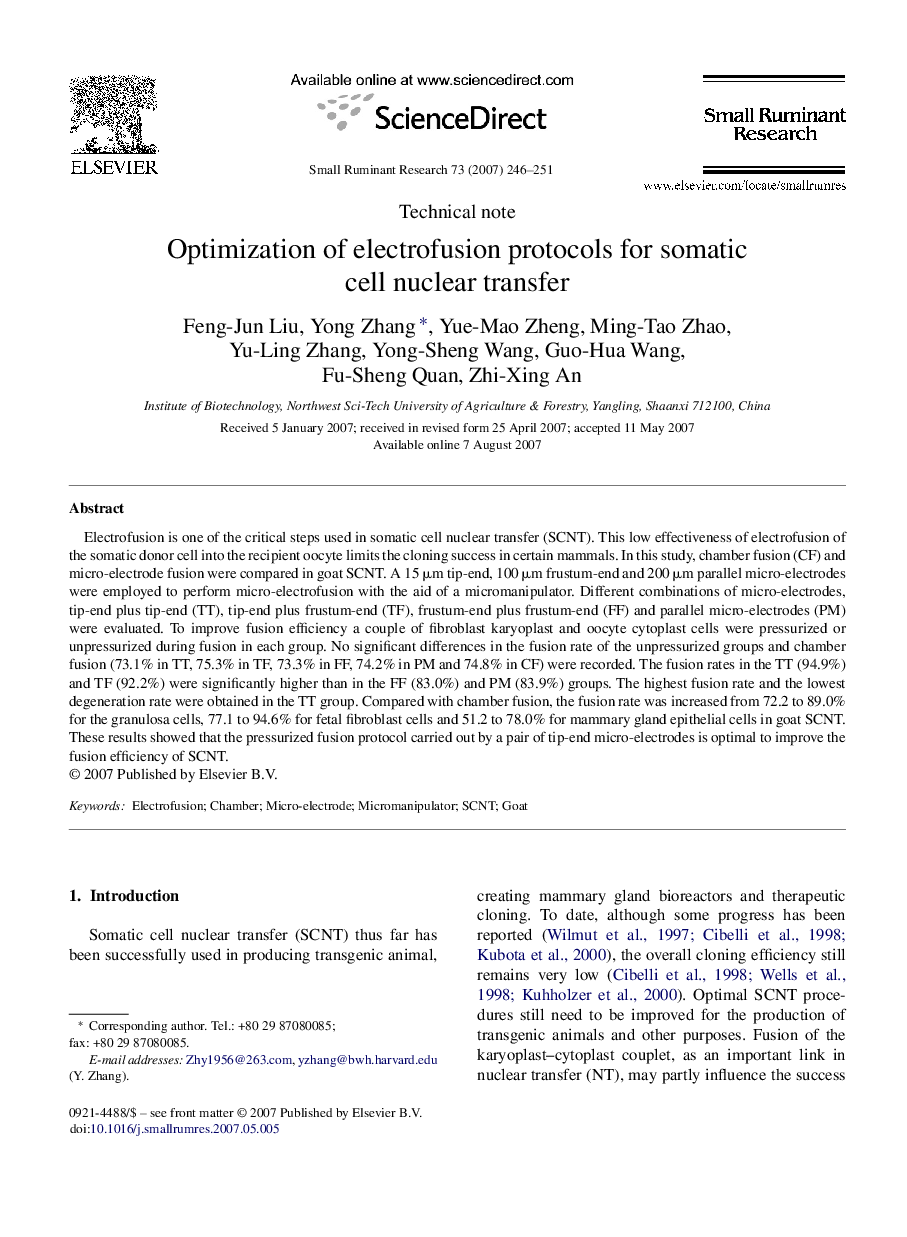| Article ID | Journal | Published Year | Pages | File Type |
|---|---|---|---|---|
| 2458086 | Small Ruminant Research | 2007 | 6 Pages |
Electrofusion is one of the critical steps used in somatic cell nuclear transfer (SCNT). This low effectiveness of electrofusion of the somatic donor cell into the recipient oocyte limits the cloning success in certain mammals. In this study, chamber fusion (CF) and micro-electrode fusion were compared in goat SCNT. A 15 μm tip-end, 100 μm frustum-end and 200 μm parallel micro-electrodes were employed to perform micro-electrofusion with the aid of a micromanipulator. Different combinations of micro-electrodes, tip-end plus tip-end (TT), tip-end plus frustum-end (TF), frustum-end plus frustum-end (FF) and parallel micro-electrodes (PM) were evaluated. To improve fusion efficiency a couple of fibroblast karyoplast and oocyte cytoplast cells were pressurized or unpressurized during fusion in each group. No significant differences in the fusion rate of the unpressurized groups and chamber fusion (73.1% in TT, 75.3% in TF, 73.3% in FF, 74.2% in PM and 74.8% in CF) were recorded. The fusion rates in the TT (94.9%) and TF (92.2%) were significantly higher than in the FF (83.0%) and PM (83.9%) groups. The highest fusion rate and the lowest degeneration rate were obtained in the TT group. Compared with chamber fusion, the fusion rate was increased from 72.2 to 89.0% for the granulosa cells, 77.1 to 94.6% for fetal fibroblast cells and 51.2 to 78.0% for mammary gland epithelial cells in goat SCNT. These results showed that the pressurized fusion protocol carried out by a pair of tip-end micro-electrodes is optimal to improve the fusion efficiency of SCNT.
